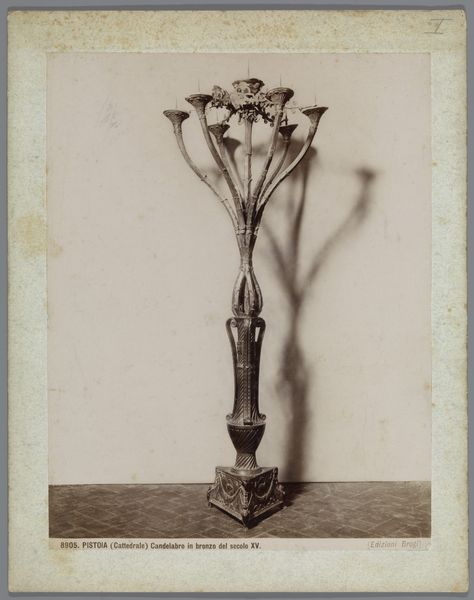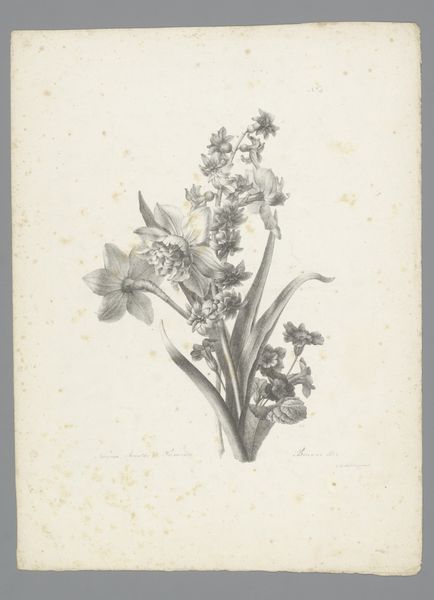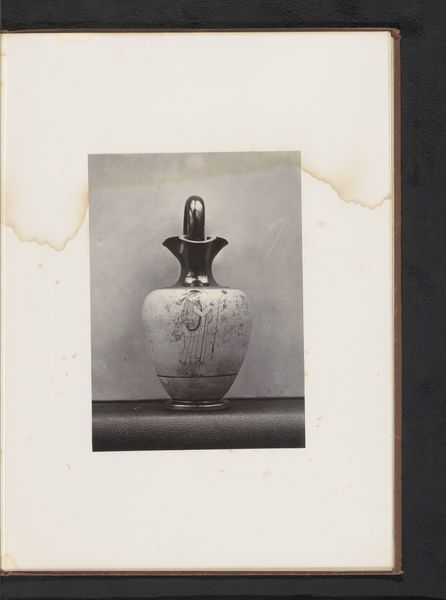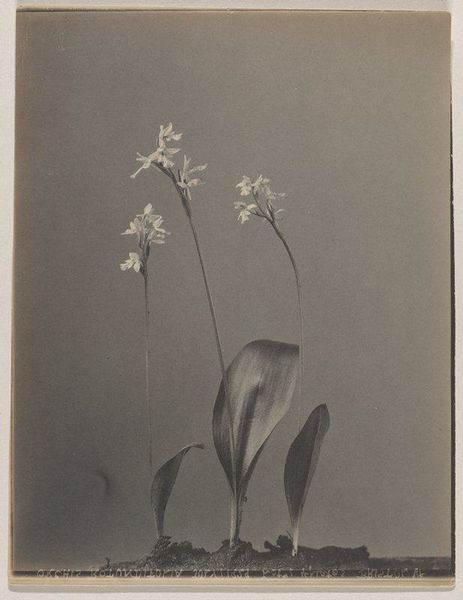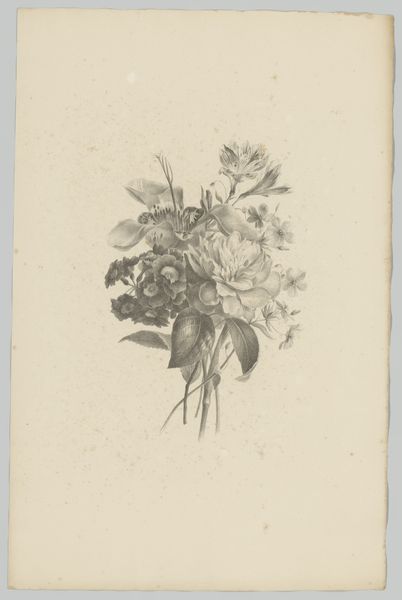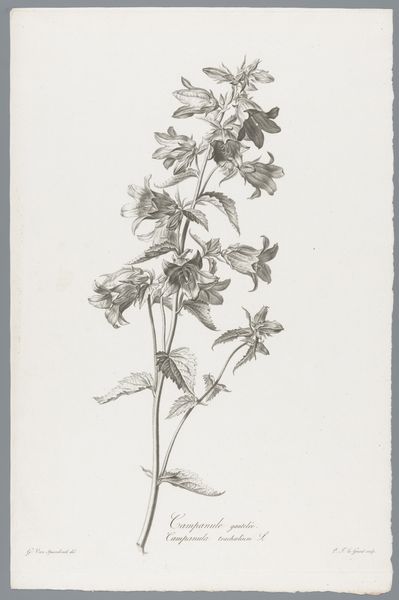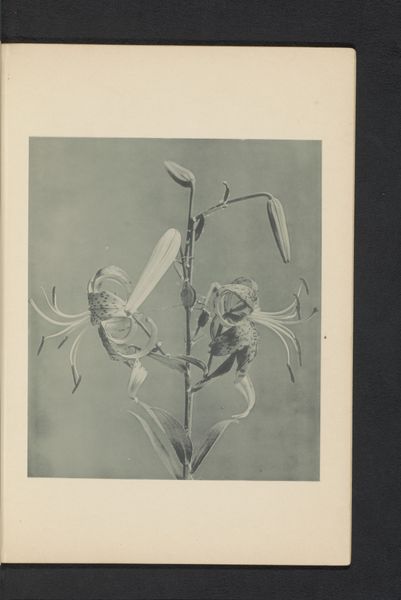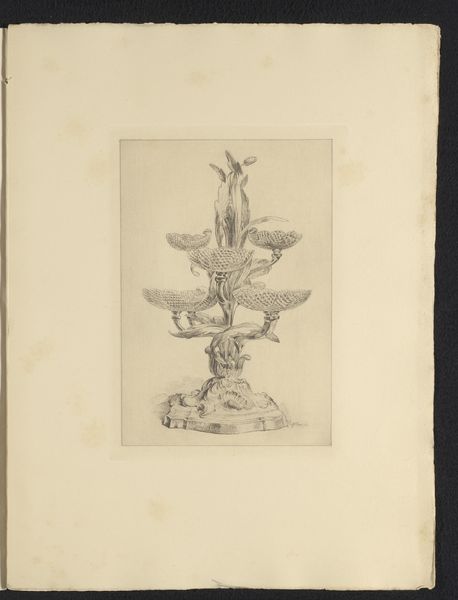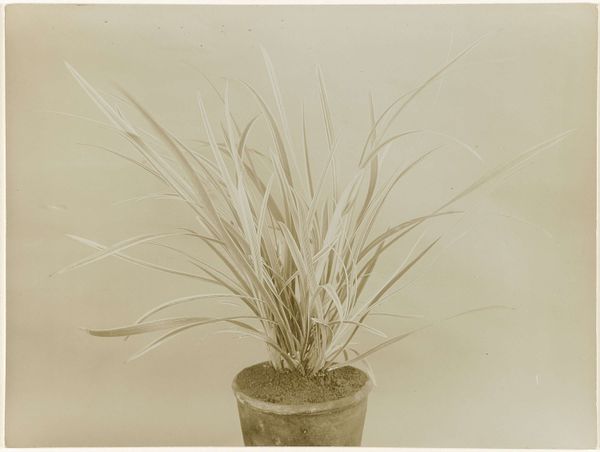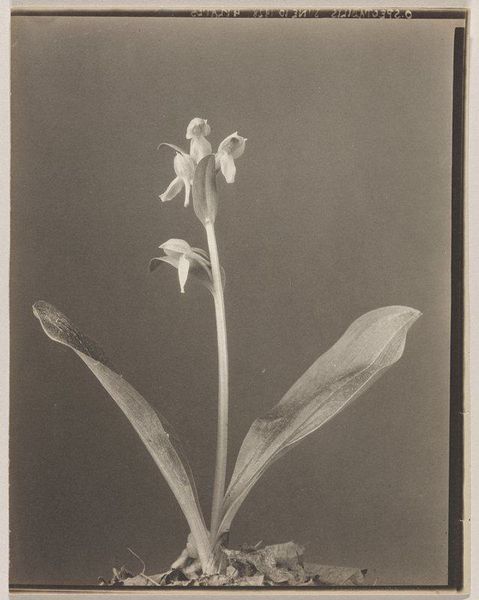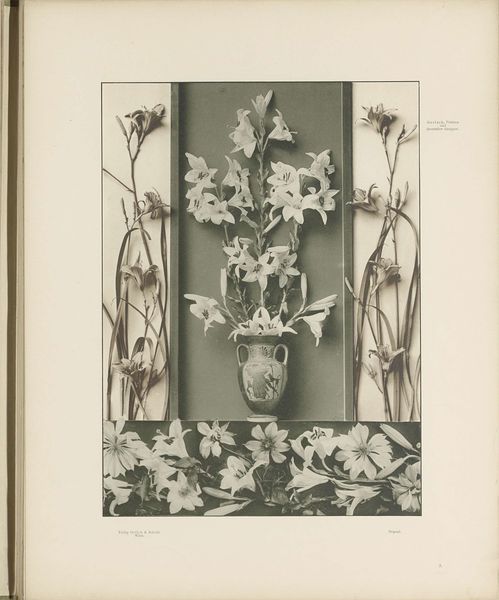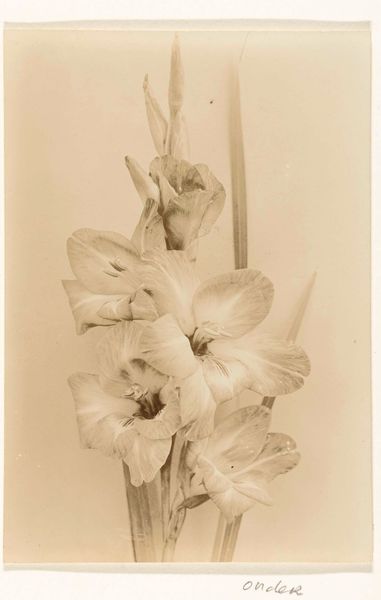
print, photography
# print
#
sculpture
#
photography
#
decorative art
Dimensions: height 118 mm, width 89 mm
Copyright: Rijks Museum: Open Domain
Editor: So, we have before us Laurens Lodewijk Kleijn’s "Stilleven met vaas bloemen," dating somewhere between 1865 and 1900, rendered as a photographic print. It's quite ethereal. What's your read on it? Curator: It's interesting to consider this work in relation to the rise of photography as both a documentary tool and a developing art form. Focusing on the technical processes of photography in that era, from the preparation of the photographic plate to the act of capturing light, reveals how much labor was involved in its creation. Don’t you think the photographic process transforms the flowers? Editor: I suppose so. What I initially perceived as "ethereal" can also be described as the manipulation of a natural form to serve aesthetic goals, yes. It seems, considering what you’ve mentioned, that it's as much about the making of a photograph as it is about representing nature. What implications do you believe that brings up for an audience? Curator: Exactly. Consider also the materials used – the specific type of glass for the vase, the chemicals used to develop the photograph, and even the paper it is printed on. Each component carries its own social and economic history. Who had access to these materials? What kind of resources and skills were required to produce an image like this? Editor: So it makes the seemingly straightforward "still life" more complex than it seems? Curator: Precisely. It urges us to reconsider the art’s position inside the production and use of technology. The very act of immortalizing something fleeting through photographic processes underscores the relationship between the emerging consumer culture and the rise of middle-class values during this period. Editor: It is insightful how a simple photograph redirects us to labor, materials, class dynamics, and historical narratives. Curator: I agree. By viewing the work as the sum of its processes and materials, we see how seemingly simple photographs, become products reflecting society, resources, and available techniques of their time.
Comments
No comments
Be the first to comment and join the conversation on the ultimate creative platform.

